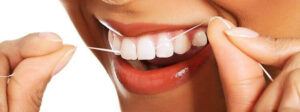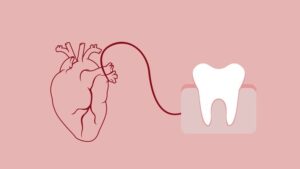Children, being innocent and unaware, often develop many detrimental dental habits leading to many serious dental conditions in future. The bad dental habits in kids may result in cavities, plaque, toothache, or crooked teeth during an early age. Getting rid of any dental condition is really a daunting task for parents as well as children too. Metamorphosing bad dental habits into suggested good habits is much simpler if religiously tackled with patience and prudence. A few of these bad dental habits are mentioned here below:

Thumb or Finger Sucking
In the initial year of the kid’s life, thumb sucking is not conceived as a bad dental habit but it is considered to be a general self-comforting behavior very common among children of this age. It has been witnessed that many of them cease to practice this habit themselves by the age of five whereas there are cases where a few kids refuse to give up this habit. Because of emotional problems some kids continue to maintain this habit even after growing quite old. This habit of thumb sucking may lead to some dental conditions like buck teeth in which the front upper teeth projects outside. This dental situation requires orthodontic attention.
Night Breast Feeds
Breast feeding at night may be harmful when the baby’s teeth starts growing as the breast milk contains sugary substance. It gets accumulated on the baby’s teeth and may often lead to tooth cavity and decay. It is advisable to clean the mouth of your baby after night breast feed to keep any dental harm at bay.
Bottle Feed at Night
Bottle feeds at night are also harmful and result in cavities in kids as the sugar containing feed fuses with the bacteria present on the baby’s teeth. It may often also lead to discoloration of the teeth in case the mouth is not properly cleaned after feeding milk.
Sippy cups
Sipping through sippy cups throughout the day is also a bad dental habit that should be discouraged. It may lead to tooth decay. It is suggested not to allow your kids develop the habit of feeding themselves only through Sippy cups for the whole day if you want to avoid any dental trouble in future.
Use of Pacifier for Long Periods
If toddlers use pacifiers for a long time it may obstruct the development of teeth and jaw of your kids. Therefore, it is imperative to discontinue this habit to avoid any dental damage to your kid.
Ingesting Fluoride Toothpaste
It has been witnessed that children tend to swallow the toothpaste during brushing their teeth. It may lead to brown spots all over the teeth and fluorosis – a dental condition witnessed due to excessive intake of fluoride. You need to teach them to spit out the toothpaste instead of swallowing it as it my create problem.
Sugary Drinks
At a very young age say one year old kid consume colas and soft drinks in heavy quantity on regular basis. This habit is very damaging for the newly developed teeth that the kid should care about. You should curtail this habit of your kid and try to impart good eating and drinking habits to enjoy good dental health.
Chewing the Pencil and Pen
Children are often prone to putting pencil and pen into their mouth and they even chew to ignorance. It is in fact a damaging habit for their teeth. Chewing pencil or pen can invite bacteria in the mouth resulting in tooth troubles. It also erodes the surface of teeth.
Brushing Rigorously
If your kid brush the teeth too hard, it can wear down the enamel of the teeth and damage the gums too. It is suggested that you should supervise the way of tooth brushing of your kids and make them learn the right process of brushing.
Brushing for Insufficient Time
Kids are not patient enough to brush their teeth for more than two to three minutes, which is a bad habit. Brushing teeth for an insufficient amount of time may lead to oral hygiene issues like plaque on the teeth, bad breath, yellow teeth, etc. Brushing the teeth once in a day is again a wrong habit. It is advisable to brush the teeth at least two times a day.
Sharing Tooth Brushes
It has often been witnessed that siblings share their toothbrush thus at the same time also shares infection and bacteria. Better this habit should be discouraged and stopped to avoid any further problems.
Retaining a good dental health of kids is not very difficult if you are patient and investigative in your approach. Have a vigil on the above said dental habits of your kids and make sure that they follow the right oral hygiene and have a perfect healthy smile on their faces.
Being specialist in Kids Dentistry, Dr. Arthur has years of experience in diagnosis and evaluating kids oral hygiene for better growth of the teeth in the future. If you feel helpless avoiding above described habits in your kids, have a friendly consultation with Dr. Arthur and know the correct way to follow for keeping your children away from these habits.



